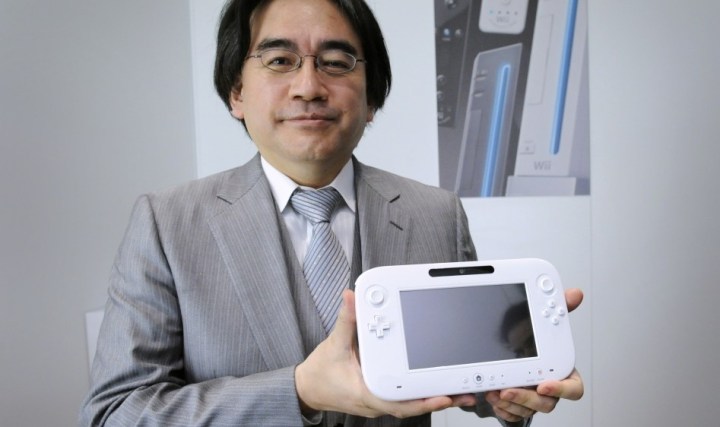
Nintendo continues to reel following the Wii U’s wretched 2013 performance, with falling stock prices, self-imposed executive pay cuts, dramatically slashed financial forecasts, and a possible push toward new business models for the coming year. President Satoru Iwata, Shigeru Miyamoto, and fellow top executives faced investors in Tokyo yesterday to explain what will be done to fix the company’s ailing business. The Wall Street Journal was in attendance as a liveblogger on translation duty, so bear in mind that it’s possible some meanings were misinterpreted.
Nintendo seems to have a three-pillar strategy to turn things around:
- Bolster hardware sales with more purpose-built software
- Add and strengthen channels for customer outreach
- Expand in new hardware directions
The first of those strategies is the most obvious: with the Wii U sitting at around 3 million sold after more than a year on store shelves, there’s a real need for Nintendo to differentiate its content in some way. Iwata promised that we’re going to start seeing more gaming content for the console that makes use of its unique features. He specifically nodded to the Wii U’s largely unused implementation of near-field communication (NFC), a built-in technology that allows the console – via its GamePad – to scan physical objects fitted with an RFID chip. Think Pokemon Rumble U.
The push to strengthen consumer awareness of Nintendo products will take aim at the smartphone space, according to Iwata. Nintendo has already hinted that it would be exploring ways to market itself in the mobile space, and now we have further clarification. There won’t be any full-fledged Nintendo games on non-Nintendo mobile devices, but the plan is to release an app or apps that more clearly communicate the company’s messaging and advertise what its products can do. Iwata wasn’t clear on the specifics of how this would function, but he admitted that getting people to use that kind of app on a regular basis is a challenge if said app is just built for marketing. He was clear that Nintendo won’t be releasing its games on other platforms, but added that more effort will be put into licensing its beloved characters out to new partners.
The third and final point – pushing in new hardware directions – is an area that Nintendo’s had particular success with in the past. Just look at what the Wii did for exposing video games to a wider audience. Iwata made a point of referencing this fact in his investor address. He went on to indicate that the next untapped frontier for the company is in the realm of “non-wearable” health monitoring. It’s not clear exactly what that means or how it might function, but it’s part of Nintendo’s longer-term plans. Iwata promised to reveal more details about the non-wearable health tech before the end of 2014, with a retail release to follow in the company’s fiscal year ending March 2016. In layman’s terms, that probably means we’ll see this new tech surface in late-2015/early-2016.
There’s a lot to unpack here and another important piece of this news puzzle that we’ve still got to sort through, so stay tuned for more soon.


